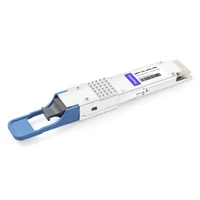The 400GBase-DR4 QSFP-DD PAM4 1310nm optical module has also been added to the elements necessary for high-speed data transmission. This module is intended to respond to the call for enhanced efficiency and bandwidth in data centers and telecommunications networks. The data rate gets even higher for this module and is up to 400Gbps by means of four lanes of PAM4 modulation, doubling its data capacity in a single PAM4 compared to non-PAM4 systems. For low-loss lengths utilized to connect large data centers using single-mode fiber, the 1310nm wavelength range is the most efficient. This blog provides the technical specifications of this advanced optical module and its compatibility issues and applications, presenting professionals with a complete description of the significance of this type of module in optical network engineering.
Table of Contents
ToggleWhat is a QSFP-DD Optical Transceiver Module?
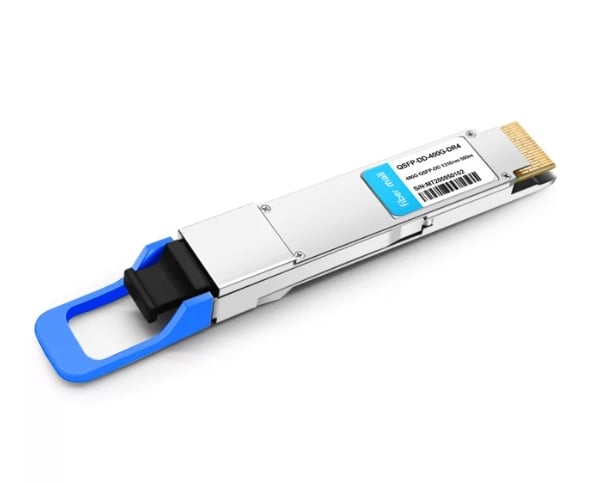
A QSFP-DD (Quad Small Form-Factor Pluggable Double Density) optics transceiver module is a convenient and space-saving networking equipment with data transfer rates of up to 400Gbps. It possesses double-density interface features that allow for higher packing densities and improve the bandwidth capabilities of the network. The QSFP-DWDM module accomplishes high data rates of 400G by utilizing eight lanes of electrical or optical signals, which are able to cater to advanced networking applications, particularly in next-generation technologies like data centers. Its design allows the user to continue using existing equipment supporting the popular QSFP interface, which makes it easy to upgrade the network with minimal effort.
How does QSFP-DD enhance data density?
QSFP-DD represents the latest step in the evolutionary line of small form-factor Pluggable (SFP) – designed in mind the networking companies that focus on high data transfer rates as well as a significant port density. By using the double contact interface, the QSFP-DD allows for eight lanes of data transmission instead of four found on the regular QSFP. This ensures a significant data increase without increasing the size of the QSFP))) transceiver. Another notable advantage of the QSFP-DD is that the total aggregate bandwidth of the module can reach 400 Gbps owing to eight 50 Gbps signaling lanes using PAM4. The most important theoretical advantage of this increased density is in the application of Costa Rica centers where, in a context of scarce physical space, maximization of bandwidth is essential. Also, it is worth noting that this specification will not make past tasks harder since the QSFP-DD is compatible with older generations and has a greater focus on cost-effective upgrades of the whole system.
What are the benefits of a QSFP-DD optical transceiver?
The QSFP-DD optical transceiver has various features that meet the demands of modern networks. For one, it has more than enough ability to support data rates of up to 400Gbps. This was made possible through double-density connectors and modulation techniques such as PAM4. The increased bandwidth is essential to meet the requirements of high-performance computing and data center networks. Moreover, the fact that the QSFP-DD is able to support interfaces of existing QSFP enhances the network upgrade by maintaining the status quo as far as the infrastructural changes are concerned. Its small form factor achieves maximum data density with no added cost for space, thus optimizing racks in data centers. All of these attributes indicate that increasing the performance and scale of the network is profitable and manageable to do with the QSFP-DD.
Which manufacturers provide QSFP-DD modules, including Cisco?
The manufacturers’ focus on the QSFP DD modules is considerably justified, as their modules were seen augmenting the network capacity. According to the recent available information from leading publications, among other manufacturers, the primary ones are the following:
- Cisco Systems: Having a convoluted array of networking products, the company enjoys a good presence across the globe and is able to offer a complete set of QSFP DD modules along with data centers that are augmentatively scalable.
- Arista Networks: They design and manufacture not just high-performance but also high bandwidth efficient and reliable QSFP DD modules which focus on the better performing modules and are specifically aimed towards the young demanding data centers.
- Juniper Networks: They provide a variety of QSFP DD solutions with a mission to provide the latest technologies that enhance network consumption as well as aid in the integration of already existing networking solutions.
These manufacturers aim for the Top Cut and further more aftermarket shares as such their products do demonstrate high levels of performance and compatibility focusing on the global expansion of the data centers.
How does the 400G DR4 Technology Work?
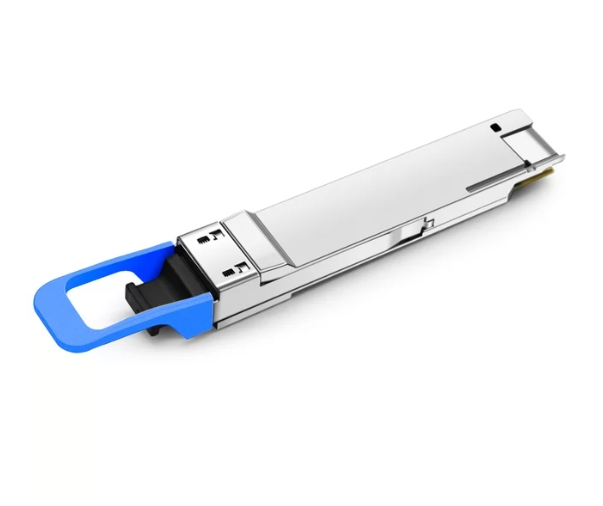
What role does PAM4 modulation play in 400G DR4?
The Pulse Amplitude Modulation Level 4, or PAM4, is the modulation function of 400G DR4 technology. It modifies the signal as an enhancement over the use of Non Return to Zero, NRZ, but instead of two amplitude levels it makes use of four. This leads to an apparent increase in the data transfer rate, as NRZ only used two. Thus, bandwidth efficiency is enhanced within the limits of the existing transmission physical layer.
PAM4 aids for effective bandwidth by ensuring four level signals which boosts density so that each symbol can now be able to cover two bits of data, this enables higher data rates such as the 400gbps. This feature is critical for 400G DR4 uses since it matches the high level of interconnections and the throughput required in contemporary data centers. Also, the cost per bit for using PAM4 technology in implementing 400G DR4 is cheaper which makes it economical for enhancing network capacity. However, PAM4 has serious limitations, such as complicated equalization and signal processing techniques, which do allow for improvements in noise level tolerance and SNR but make the integration of high-speed optical communication systems complex.
How does 1310nm wavelength support data transmission?
Because of its low dispersion and attenuation when propagating in optical fibers, the 1310nm wavelength region is quite useful for medium-range and long-distance communication. Signals transmitted at this wavelength suffer a low loss in fiber, which assists in keeping the signal stronger over a longer distance, with little amplification needed. Moreover, the 1310nm range coincides with the zero-dispersion wavelength, which ensures low pulse spreading and, consequently, fewer data transmission errors. This makes it ideal for use in high-speed and high-capacity data optical networks such as those implemented in 400G DR4 applications.
What is the reach capability of the 400G DR4 at 500m?
The 400G DR4 specification covers the transmission of data over multimode fiber (MMF) links for distances of up to 500 meters. This distance is especially adequate for intra data centre links that require high throughput connections. The reach capability is facilitated by a multitude of single mode fibers terminated with MPO connectors, using modulation schemes that result in reduced power consumption and cost per bit with low latency signal transmission. Such infrastructure is critical in overcoming the increasing data center interconnect and bandwidth scalability requirements.
Why Choose an SMF Optical Transceiver for 400G?
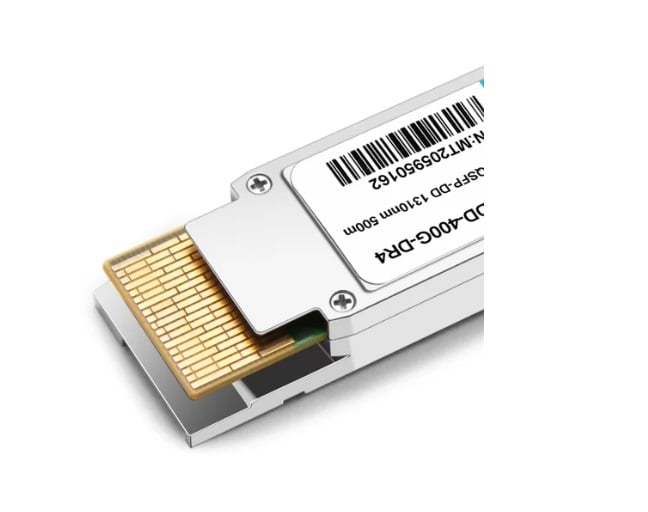
What makes SMF suitable for optical transceivers?
For the construction of 400G networks, Single-Mode Fiber (SMF) is consistently considered the best option. This is because SMF enables the transmission of data over long distances but with low power law and interference. SMF cables have a smaller core diameter (8 to 10 micrometers in diameter), which allows for the transmission of only one light mode. As a result, it reduces modal dispersion, and enables high bandwidth, making the Single-Mode Fiber arguably the best for long-haul as well as high-density metropolitan area networks. SMF also allows the use of wavelength-division multiplexing (WDM) techniques which help to increase the data rate by enabling a number of signals to transmit at the same time but on different wavelengths. Such minimal use of signal repeaters helps maintain data quality and reduce the structure’s cost and complexity. In summary, these features enhance the performance, scalability, and lifecycle of advanced optical communication systems, respectively.
How does SMF enhance 400G Ethernet performance?
The performance of 400G Ethernet networks is significantly improved through the use of Single-Mode Fiber (SMF) features. Its limitation in modal dispersion and low attenuation enables sound and long-haul data transfer, thus eliminating the concern of signal ‘hits’ or ‘fading.’ Moreover, SMF’s ability to work with advanced modulation schemes and WDM permits increased rates of data transmission and the transmission of multiple signals through one fiber. All these characteristics work together to maximize throughput, decrease latency, and provide a high-reliability connection, thus improving the efficiency of 400G Ethernet networks.
What advantages does SMF FEC offer for data centers?
One of the noteworthy advancements in the communication systems deployed in data centers entails the integration of Single-Mode Fiber (SMF) with Forward Error Correction (FEC) codes. In this system, data integrity is ensured by making sure no error is left uncorrected during transmission which enables the system to operate over long distances without retransmissions efforts. The implementation of such a system greatly lowers the bit error rate which in effect improves service availability and order in which data is transmitted.
Costly infrastructure costs and their maintenance are considerably reduced, and all this is thanks to the system reach, as no further amplifiers or repeaters are needed. This feature is particularly useful for cloud providers and big data centers that regularly transfer data between large server zones located far from each other. In addition, the introduction of FEC in SMF allows cloud centers to get additional data streams per unit transmission bandwidth by improving modulation schemes and implementing more sophisticated Wavelength-Division Multiplexing (WDM).
Extensive analysis indicates that the incorporation of SMF FEC codes enables systems to achieve a Square Root of 10 power negative15 reduction in attainment ratio of bit error rate, a move that enhances the service (Quality of Service) being offered in such a system, especially in the bottom line. Such features make SMF FEC a key building block in the construction of a contemporary data center architecture and enable such a system to easily grow in order to address the rising demand for greater reliability of data transmission and networks.
How to Implement 400G QSFP-DD in Data Centers?
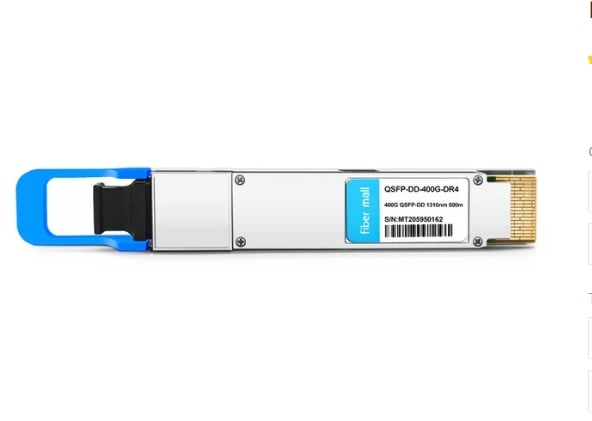
What are the connector options for 400G deployments?
Connecting Points Constructing a 400G infrastructure in data centers calls for appropriate choices of connectors to facilitate workability and performance. There are various types of connectors that are engaged during the 400G deployments, and some of them are better suited for the job. Some of these are the most basic types which are used for 400G applications:
- QSFP-DD (Quad Small Form-Factor Pluggable Double Density): One of the most friendly 400G applications connectors out there, the QSFP-DD connectors have managed to take up the highest application across the board. This system supports 8 lanes of electrical data while also giving the functionality to interconnect with other lower level networks.
- OSFP (Octal Small Form-Factor Pluggable): One of the most unique connectors with compliance specifically for 400G applications the OSFP connector allows for wide functional support with a medium Tommy like build. This connector helps foster high performance however, the power density modules will be fitted into 8 broad electrical lanes.
- CFP8 (C Form-Factor Pluggable 8): Out of the various 400G implementations, the type wherein heat and extended reach cabling is required the c form fitting and plugging 8 cable solves this issue thanks to advanced power modules embedding capabilities while having connectors allowing the cable to transfer a wider range of signals.
- COBO: Cobo connectors ‘gun’ for a ‘new’ ‘order’ of where the optical transceivers are mounted directly on the switch motherboard thus minimizing the insertion loss while improving the thermal performance. This helps especially in pushing the limits in high-density 400G deployments.
These various connection types have their own distinct set of advantages and disadvantages in regard to their power requirements, size, or spatial volume, and heat generation. It is advisable for the data center architects to assess the demands posed towards the construction of the entire network to choose the best suited connector type for the needs of their 400G deployments.
Can 400G QSFP-DD modules support breakout configurations?
There’s an opportunity to utilize breakout configurations when using 400G QFSPS-DD modules. Such flexibility is integrated into the modules, which makes it possible to split one 400G port into lower data rates, such as 4x100G. This feature improves the expansion of networks and enhances the efficient utilization of bandwidth in data center settings. When a high density of interconnections is required, breakout configurations are very useful, allowing network operators to increase the network performance while still meeting some of the physical requirements.
What Are the Key Features of Cisco’s QDD-400G-DR4-S?

How does this module support QSFP-DD MSA standards?
The Cisco QDD-400G-DR4-S module has a quad-level connector interface, which is designed to support any network environment and is compliant with the QSFP-DD MSA modules standard. Also, in accordance with the designs developed by the QSFP-DD MSA, the module has specifications on electrical, mechanical, and thermal parameters that enable it to be integrated into the existing network systems. The module conforms to the mechanical structure of a QSFP-DD device and can be used in already existing ports of the same type in networks for easy fitting and removal. At 400G data signaling, it ensures the implementation of all management of power and high-speed signaling. The modules are also thermally backed such that there is little heat produced even with large amounts of data passing through them. It has a well-built construction to support data on the most demanding applications while maintaining high speed and very little packet forwarding loss. Such standardization defines its importance in the quest for improved speeds in networking aid in the growth of orientated infrastructures.
What differentiates Cisco’s 400G DR4 offerings from competitors?
Cisco’s 400G DR4 modules are best recognized for their ease of use, cutting-edge features, and prolonged ecosystem support. Here are key differentiators that are likely to set them apart from the competition:
- Best Optical Performance: Cisco’s DR4s have established the use of optics for signal integrity, extension, and reach, and supporting transmission length which is a factor for data sensitive environments, throughout the world.
- Greater Dependability and Durability: Owing to their incorporation of sturdy structures and materials, Cisco modules are built to be rugged and resilient and perform well in harsh environments and networks and have longer shelf lives.
- Broad Compatibility: By complying with the required standards as well as having backward compatibility with the older infrastructure, Cisco is able to lessen the compatibility concern while guaranteeing extensive inter operability across numerous network environments.
- Extensive Diagnostics and Monitoring: The utilization of these modules is such that troubles can be anticipated and measures taken before the trouble arises, as diagnostic and performance checking tools are enabled in order to evaluate network performance.
- Reduction in Electricity Consumption: Cisco’s 400G DR4 modules aid in reducing electricity consumptions through power management and thermal efficiency, hence supporting eco-friendly and cut down running costs.
- Unique Technology Combination: Complex algorithms blend for optimum output, enhancing performance levels and translating to higher data rates while boasting lower latency and less packet loss.
- Unequaled Assistance and Service: Cisco is an extensive support and service provider including service, software, and professional advice which gives operators the opportunity to fully use their network capabilities.
These differentiators show Cisco’s intent to ensure they provide superior networking facilities with the intention to not only satisfy current needs but also provide for the future needs of high speed data communication.
What are the compatibility considerations for Cisco QDD-400G-DR4-S?
The Cisco QDD-400G-DR4-S module will strive to maintain maximized compatibility in different networking environments. Some of the glaring aspects are:
- Compliance with IEEE Standards: This module is compliant to IEEE 802.3bs. This will enable some degree of multivendor interoperability and integration into pre-existing network systems.
- Interoperability with Industry Protocols: The QDD-400G-DR4-S supports Ethernet and InfiniBand networking protocols therefore, it offers connectivity to many high speed network interface and also used in hybrid systems.
- Backward Compatibility: This is especially for high speed data transmission, but it is backwards compatible with lower bandwidth modules so that there is flexibility in upgrading networks without the need to replace the entire infrastructure.
These features demonstrate the scope possession of the QDD-400G-DR4-S module to work effectively in various configurations at the present or in the future across the networks.
Reference Sources
Frequently Asked Questions (FAQs)
Q: What is a Compatible 400GBase-DR4 QSFP-DD PAM4 1310nm transceiver?
A: The Compatible 400GBase-DR4 QSFP-DD PAM4 1310nm transceiver is an optical module for broadband transmission designed for usage over single-mode cables. It is capable of sending signals of 550Gbps over a distance of 500 meters using PAM4 encoding.
Q: How does the QSFP-DD DR4 compare to other 400G optical transceivers?
A: The DR4 of QSFP-DD protocol was specifically designed to be used for connection between servers over short distances making use of 1310nm wavelength and achieving rates over 500m. It makes this better than some other designs such as FR4 and LR4, that are designed for larger distances but get lower transmission rates.
Q: What distinguishes a QSFP-DD 400G from other transceiver modules?
A: Compared with its more primitive predecessors, the QSFP-DD 400G supports high lane speeds and high densities by allowing the transmission of 400Gbps signals over 8 electrical lanes. Thanks to it, the best modern high-capacity networks can use it.
Q: Can a QSFP-DD 400G DR4 be used in a 10km application?
A: The answer to this question is no. The QSPF-DD DR4 model’s maximum application range is 500 meters. If a longer reach is needed, other models, such as LR4, can be useful.
Q: What purpose does PAM4 modulation serve in the context of QSFP-DD DR4 modules?
A: By implementing PAM4 modulation in QSFP-DD DR4 modules, the data of 2 bits encoded as ‘symbols’ can be transmitted, thus enabling increased data rates by facilitating doubly the transmission as opposed to the standard NRZ modulation transmission.
Q: Do Cisco switches have supporting options for 400G DR4 QSFP-DD?
A: Compatible options do exist for 400G DR4, such as Cisco QDD-400G-DR4-S, which aim to work in conjunction with Cisco devices.
Q: What is the use of the connector in the QSFP-DD 400GBase-DR4 module?
A: A QSFP-DD 400GBase-DR4 module has a QSFP-DD connector that supports 8 lanes of electrical signals within a small size.
Q: In what ways does a 400GBase-DR4 1310nm 500m DOM differ from the other modules?
A: A 400GBase-DR4 PAM4 1310nm 500m DOM module is accompanied by digital optical monitoring, which oversees the range at which the signal can reach, thus allowing for diagnostic checks of information.
Q: A SMF FEC optical transceiver module networks in what way?
A: An SMF FEC optical transceiver module is integrated with Forward Error Correction that enhances the performance and precision of signals in single-mode fiber; thus, data can be exchanged at high speeds without the risk of mistakes.
Q: Are supplementary QSFP-DD SMF Modules compatible with the current networks?
A: The short answer is yes; QSFP-DDSMF modules are built to be compatible with the existing single-mode fiber networks. This means it can be easily upgraded to higher speeds without changing much in the infrastructure.
Related Products:
Related posts:
- QSFP-DD vs OSFP vs QSFP56 vs QSFP112: Advantages and Challenges
- 40G QSFP BIDI vs 40G QSFP SR4 vs 40G QSFP UNIV
- Exploring the World of QSFP Transceivers: Cisco Compatible Solutions for MMF Optical Networks
- The Ultimate Guide to Fortinet Compatible Transceivers: Understanding Fortinet FN-TRAN-SFP+SR and More

